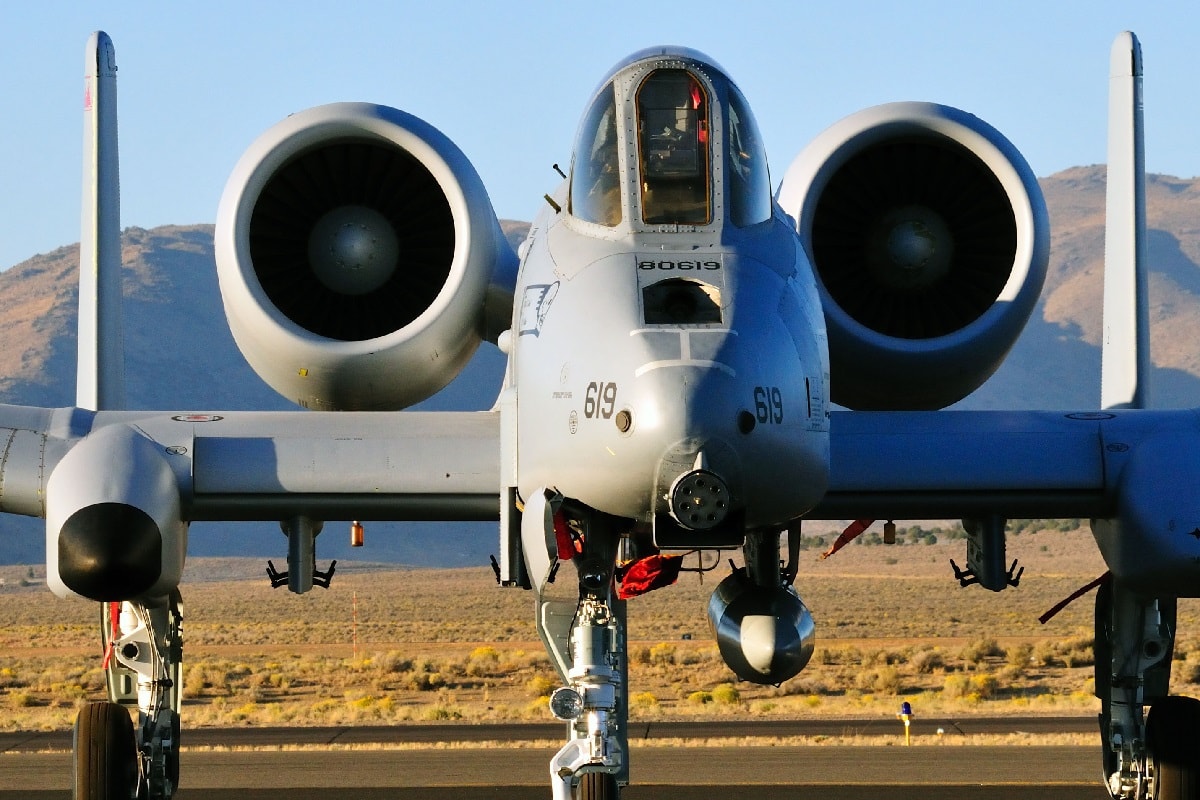One helicopter, call sign Pedro 83, dropped three pararescuemen onto a ridge several hundred feet from the crash site, where they found one of the Army helicopter pilots alive. The other Pave Hawk, Pedro 84, dropped two PJs closer to the crash site. The other pilot was dead when they arrived.
The PJs and their helicopters began taking heavy fire almost immediately.
Pedro 84 took heavy fire, and the flight engineer was shot in the leg, forcing the helicopter to return to base to get the airman medical attention and to grab another engineer. The two PJs, Staff Sgts. Zachary Kline and Bill Cenna, were left at the crash site.
Pedro 83 tried to get the three PJs and the surviving pilot out but had to cut the hoist. Rather than hoisting them up, the pilots opted to lower the helicopter down into what the Air Force said was “a daring one-wheel hover” to get them back.
Supported by AH-64 Apache helicopters flying overwatch, Kline and Cenna took cover in a rock outcropping, but they were forced to abandon that position and relocate as enemy fire set off the munitions on the downed Army helicopter.
Hilkert, then a captain with the 74th Expeditionary Fighter Squadron, was supporting operations in another area in his A-10C when the call for help came in over the Guard frequency.
“You need to understand that in a combat zone using Guard is sacred — a last resort,” Lt. Col. Rick Mitchell, the 442d Operations Group deputy commander who presented Hilkert with the DFC, said in a statement, calling it “a true sign that things are bad, and someone needs help.”
Hilkert, fueled by Rip-It energy drinks and flying a plane identified as Hawg 73, joined forces with Capt. Rustin “Trombone” Traynham and Lt. Col. David “Seymour” Haworth in Hawg 71 and 74 respectively, creating Sandy 1, a force of three A-10s.
They fired rockets into the valley while Hilkert established airspace restriction and communications relays for coordinating the fight.
The rockets gave Kline and Cenna a short reprieve before they soon found themselves taking heavy machine gun fire at close range, within 50 meters, according to the Air Force.
Hilkert managed to identify the threat and relay targeting information to the other two A-10s while refueling, which is no easy task, and the two other pilots opened fire with their 30 mm cannons, “saving Kline’s and Cenna’s lives,” the Air Force said.
Two groups of 16 Army quick reaction force soldiers landed at two different locations later that morning, immediately coming under fire. One soldier was killed, and at least one other was hurt.
Hilkert tracked one group with his binoculars while monitoring the other with his targeting pod. He also coordinated the efforts of the attack helicopters, tanker, intelligence, surveillance and reconnaissance assets, and the other attack aircraft to shield ground forces from friendly fire while tracking enemy positions.
As ground forces took fire, two rescue helicopters supported by two Apaches and two A-10s flown by Hilkert and Haworth flew in to evacuate a wounded soldier, but the helicopters kept having to fall back amid heavy incoming fire.
To draw enemy fire away from the helicopters trying to carry out the rescue mission, Hilkert repeatedly flew his aircraft into danger.
His award citation explains that he “knowingly and selflessly put his aircraft in harm’s way to ensure the survival of the rescue package, which ensured no further loss of assets despite nine observed surface to air fires.”
He helped clear landing zones, facilitating the rescue of the wounded soldier. Later, the other rescue helicopter flew in and got Kline and Cenna, who managed to get the fallen Army pilot out as well.
Though the Air Force praised Hilkert, saying that his “skill and vigilance led to the securing of two landing zones, rescuing the two Guardian Angels, and recovering the downed pilot and evacuation of the 32 soldiers in the QRF team,” he said the experience was “bittersweet.”
“I’m honored to be amongst a group of heroes that did their best with a bad situation,” he said in a statement. “Several people lost their lives during this mission, so it wasn’t all high fives when we got home. We flew back to Kandahar in silence.”
Hilkert is the fourth Air Force pilot who participated in that mission to earn the Distinguished Flying Cross. Additionally, two pararescue airmen received Silver Stars, as did two helicopter pilots.
Air Force Times, which first reported Hilkert’s actions, said that his recent award was the result of a renewed award application backed by the support of a number of leaders. Hilkert is currently a member of the Air Force Reserve.
Ryan Pickrell is a senior military and defense reporter at Business Insider, where he covers defense-related issues from Washington, DC.

